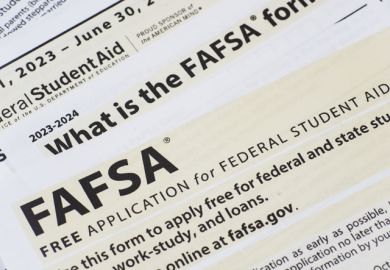The admissions service also says that the introduction of £9,000 fees in 2012 does not appear to have increased inequality in the sector by adversely affecting those from poorer backgrounds.
Mark Corver, Ucas’s head of analysis and research, says application rates among school leavers did fall by about 5 per cent in 2012-13 before returning to the long-term trend of increasing demand, with rises in 2013-14 and again in 2014-15, and demand now at the highest-ever levels.
“It is likely that application rates remain a little below what they would have been if higher fees had not been introduced,” says Dr Corver, in an analysis published on 7 November.
However, he concludes that £9,000 fees did not reduce young people’s chances of entering higher education.
This is because around half of the initial drop in recruitment was down to a significantly larger proportion of students who applied prior to the introduction of higher fees choosing to attend straight away, during 2011-12, rather than deferring to 2012-13, Dr Corver says. Meanwhile, the proportion of 18- and 19-year-olds entering higher education has continued to increase.
“By 2013, universities and colleges were making more offers to applicants and being more flexible in entry requirements,” Dr Corver adds. “The acceptance rate increased and many young A-level applicants were entering universities and colleges at a rate that, in 2011, would have needed a single extra grade across their three A levels.”
The Ucas analysis also concludes that inequality among university entrants has reduced since higher tuition fees were introduced, despite concern that increased costs would have the opposite effect.
“Neither application rates nor entry rates have shown any differential effect by background,” says Dr Corver. “This has allowed the trend of stronger growth in demand and entry from the most disadvantaged to continue.”
There has been no trend of poorer applicants moving away from courses with higher fees, Dr Corver adds.
The analysis was welcomed by Liz Shutt, head of policy for the University Alliance.
“This timely analysis clearly demonstrates that students are not being dissuaded by the increase in fees since 2012 and are actually entering higher education in record numbers,” she said.
However, Ms Shutt argued that poorer students would “always be disadvantaged in a system that restricts places” and said the lifting of the cap on student numbers for 2015-16 would make a vital contribution to improving equality.
Register to continue
Why register?
- Registration is free and only takes a moment
- Once registered, you can read 3 articles a month
- Sign up for our newsletter
Subscribe
Or subscribe for unlimited access to:
- Unlimited access to news, views, insights & reviews
- Digital editions
- Digital access to THE’s university and college rankings analysis
Already registered or a current subscriber? Login




